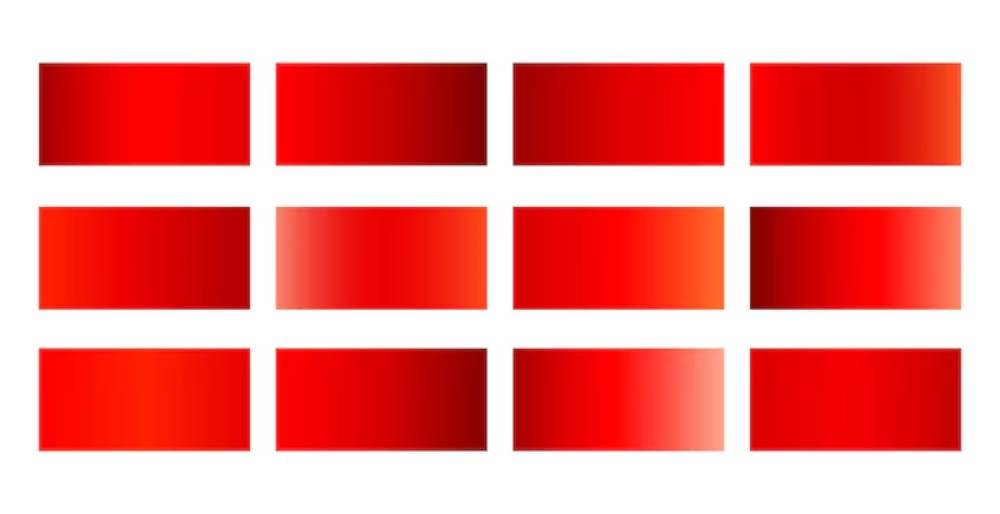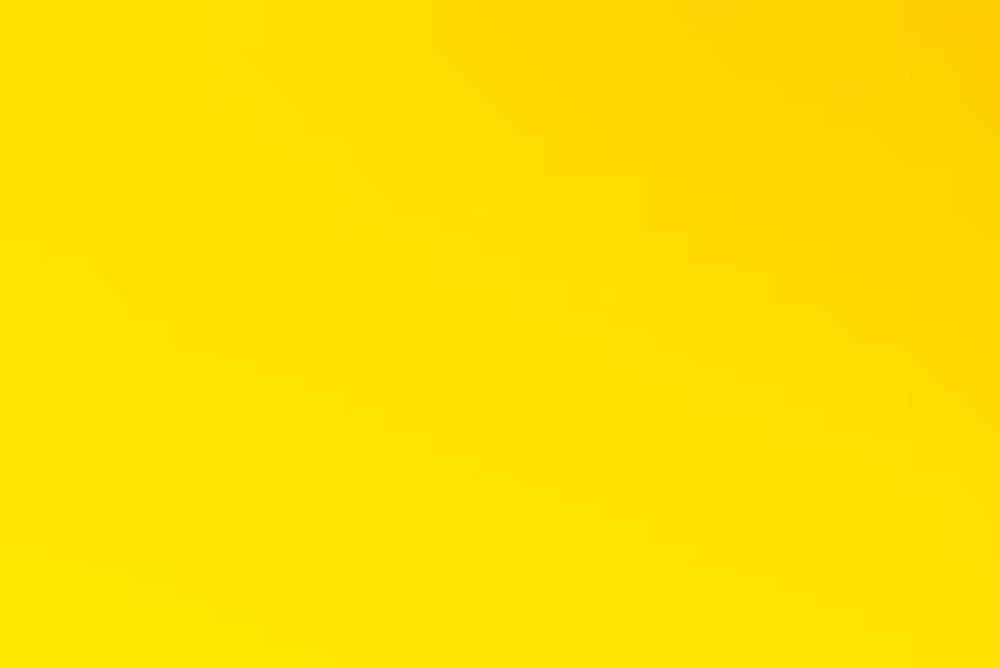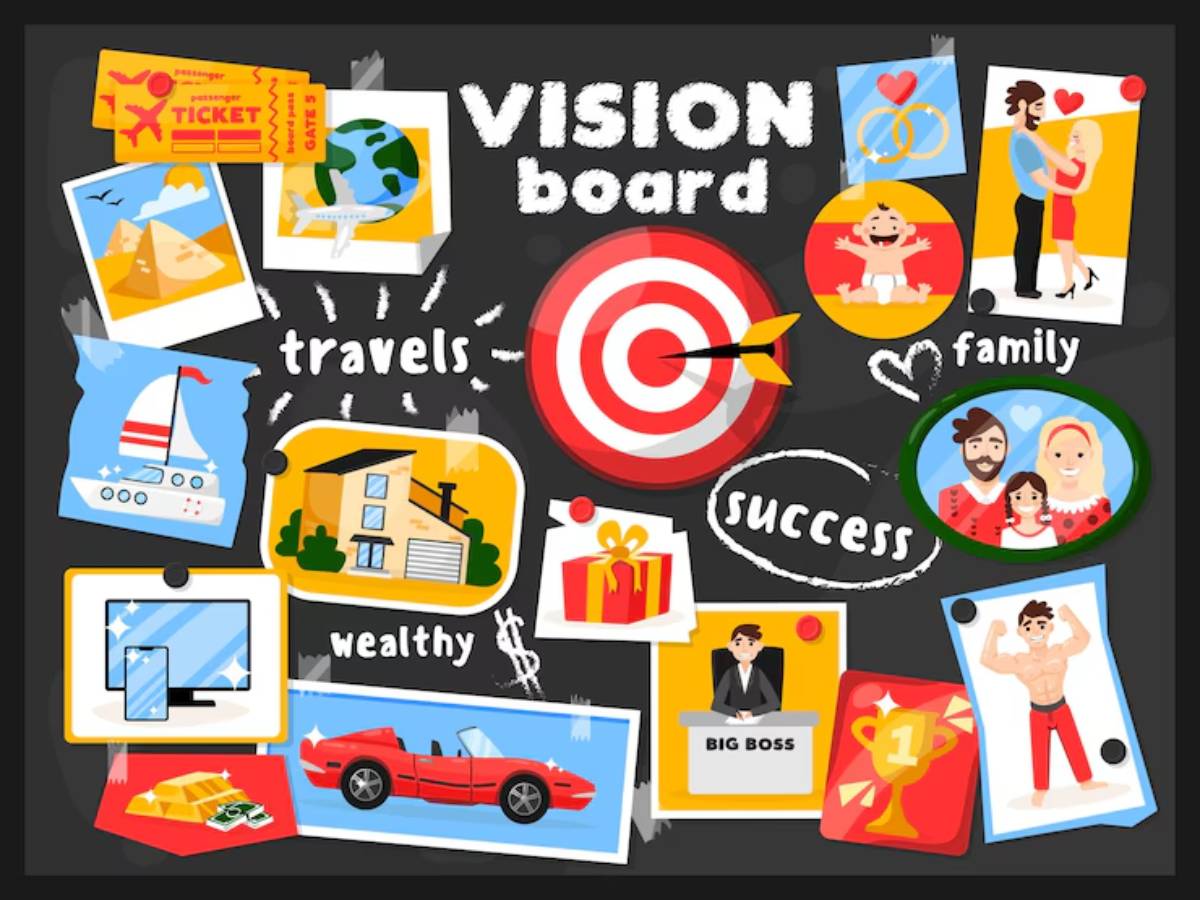
Using Colour Psychology in Your Vision Board
Sometimes, the difference between a vision board that inspires action and one that just looks pretty is colour. Not just in a design sense, but in a psychological one. Because believe it or not, colour isn’t just visual—it’s emotional. It speaks in feelings, in instincts, in energy.
And when crafting a vision board meant to guide life’s direction, understanding vision colour symbols can turn your board into something even more powerful—something that speaks to your goals at a subconscious level.
So if you’ve ever asked, “Should I use green for money goals?” or “Why does that yellow feel so motivating?”—you’re already on the right track. Let’s unpack how to use colour psychology to bring depth, emotion, and serious intentionality to your vision board.
Why Colour Matters in Goal Setting
Colour isn’t just about decoration. It’s one of the fastest ways to communicate meaning. Even before the brain processes words, it processes colours and assigns emotional value to them.
That’s why certain colours feel energising while others feel calming. It’s also why branding experts obsess over palettes, and why choosing colours for your living space takes more time than it probably should.
On a vision board, colours can:
- Reinforce the emotional tone of your goals
- Help your brain categorise different intentions
- Create subconscious cues that influence behaviour
- Visually balance the layout for clarity
When used intentionally, a colour coded board becomes more than organized—it becomes emotionally charged and aligned with purpose.
The Psychology Behind Common Colours
Let’s break down the emotional and symbolic associations of some of the most common colours used in vision boards.
Red – Passion, Power, Action

Red is a bold move. It’s the colour of energy, risk-taking, and forward motion.
Use red to represent:
- Career ambition
- Bold life changes
- Physical strength or health goals
- Goals that require courage
Too much red can feel intense, but small, intentional pops can spark motivation.
Orange – Creativity, Confidence, Joy
Orange walks the line between excitement and warmth. It’s the social butterfly of the colour world.
Use orange to reflect:
- Creative pursuits
- Social goals (networking, friendships)
- Fun, passion projects
- A zest for life
It’s a great colour when your goals need an injection of enthusiasm.
Yellow – Optimism, Clarity, Learning

Bright, radiant, and mentally stimulating—yellow shines a spotlight on ideas and awareness.
Use yellow for:
- Personal development
- New learning journeys
- Mental clarity
- Joy-focused goals
Want to highlight mindset shifts or new beginnings? Yellow’s your ally.
Green – Growth, Wealth, Balance
Green is grounded. It speaks to expansion—slow, steady, and sustainable.
Use green for:
- Financial goals
- Health and healing
- Environmental or nature-connected dreams
- Long-term growth plans
Different greens carry different tones—deep forest green feels stable, while bright lime feels energetic.
Blue – Peace, Trust, Communication
Blue calms. It also communicates. That’s why it’s often used for inner work, self-trust, and relationship goals.
Use blue to represent:
- Emotional stability
- Relationship clarity
- Communication growth
- Work-life balance
Blue’s perfect for goals that involve peace, diplomacy, or steady progress.
Purple – Intuition, Spirituality, Luxury
Purple lives at the intersection of mystical and regal. It’s a colour of higher purpose and imaginative dreaming.
Use purple for:
- Spiritual expansion
- Meditation or mindfulness
- Visionary goals
- Aspirations related to art or expression
Light lavender feels soft and dreamy. Deep violet evokes power and wisdom.
Black – Focus, Elegance, Depth
Black isn’t always “dark.” Used well, it can represent power, clarity, or seriousness.
Use black to emphasise:
- Deep commitments
- Boundaries or structure
- Confidence and control
- Simplification
Black works best in contrast—too much can overwhelm, but the right amount grounds the board visually.
White – Clarity, Space, Purity
White is often forgotten—but it’s the canvas for everything. It creates breathing room and allows other colours to shine.
Use white for:
- Starting fresh
- Letting go
- Mental clarity
- Emotional reset goals
Don’t underestimate the power of negative space.
Want layout ideas to balance your colours? Visit Best Vision Board Layouts for Maximum Clarity for inspiration.
Colour Meaning Goals: A Simple Chart
Here’s a quick reference to help you pair colours with common life goals:
| Goal Type | Suggested Colour(s) |
| Career Growth | Red, Yellow, Black |
| Financial Abundance | Green, Gold, Deep Blue |
| Health & Wellness | Green, Blue, Orange |
| Relationships | Pink, Blue, Purple |
| Creativity & Passion | Orange, Purple, Red |
| Spirituality | Purple, White, Indigo |
| Travel & Adventure | Turquoise, Yellow, Red |
| Emotional Healing | Blue, Green, White |
| Learning & Growth | Yellow, Green, Navy Blue |
Remember, there’s no one-size-fits-all. Go with what feels right—then use psychology to enhance that instinct.
Create a Colour Coded Board
Now that you know which colours carry which meanings, here’s how to turn that knowledge into an intentional design.
Categorise Your Goals
Start by grouping your goals—by area of life, emotion, timeline, or focus. Choose 3–6 categories for clarity.
Assign a Colour to Each Category
Choose colours that match the emotional tone of each goal set. Refer to the chart above for guidance.
Select Matching Visuals
When sourcing images, quotes, or symbols, look for colour alignment. Not every image has to be a perfect match—but the general tone should reflect your colour themes.
Use Backgrounds, Borders, or Symbols
You can reinforce colour coding by using coloured paper, washi tape, digital borders, or even hand-drawn shapes in the category’s chosen hue.
Label It (Optional)
If clarity helps you, label each colour category. “Green = Wealth Goals,” for example. This can keep you focused during your daily check-ins.
Examples of Vision Colour Symbols in Action
Colour doesn’t just live in the background—it can become symbolic within the board itself.
For Wealth Goals:
Use a green path winding toward a golden house or dollar symbol. Include luxury brands or success quotes in gold script.
For Relationship Goals:
Use warm tones—pink for love, blue for communication. Heart icons, smiling couples, and soft textures work well here.
For Health Goals:
Choose leafy greens, earthy tones, and images of fresh foods or nature walks. Overlay with action verbs like “nourish” or “revive.”
For Spiritual Goals:
Purple mandalas, white light beams, or photos of candle-lit spaces offer both mood and intention.
Digital vs Physical: Does Colour Work the Same?
Yes—and no.
On Digital Boards:
- Colour saturation is brighter
- Easier to control hue and match palettes
- Great for tech-lovers or visual perfectionists
On Physical Boards:

- Textures add depth to colours (felt, ribbon, paper)
- Emotional connection is often stronger through crafting
- Great for people who process through touch
No matter the format, colour still activates emotion. Just choose the version that feels more immersive to you.
Need digital options? Try How to Make a Digital Vision Board in 15 Minutes.
Common Mistakes (and How to Avoid Them)
Using Colours That Conflict
If your board feels “off,” it might be clashing hues. Use a simple palette and avoid throwing in colours just because they look nice.
Overloading the Palette
More isn’t always better. Too many colours dilute clarity. Stick to 3–5 core tones for best impact.
Ignoring Personal Symbolism
Some people see red and feel stress. Others see purple and think royalty. Your personal associations matter more than the textbook.
Let Colour Be Your Compass
Colour doesn’t just decorate your vision board. It directs it. It adds emotional intelligence to your layout. It invites your subconscious to participate.
Whether you build a rainbow of ambition or a monochrome of calm, the right colour choices can whisper to you—reminding you why you started, what you value, and where you’re going.
So choose wisely. Feel deeply. And let your colours speak your future into motion.


